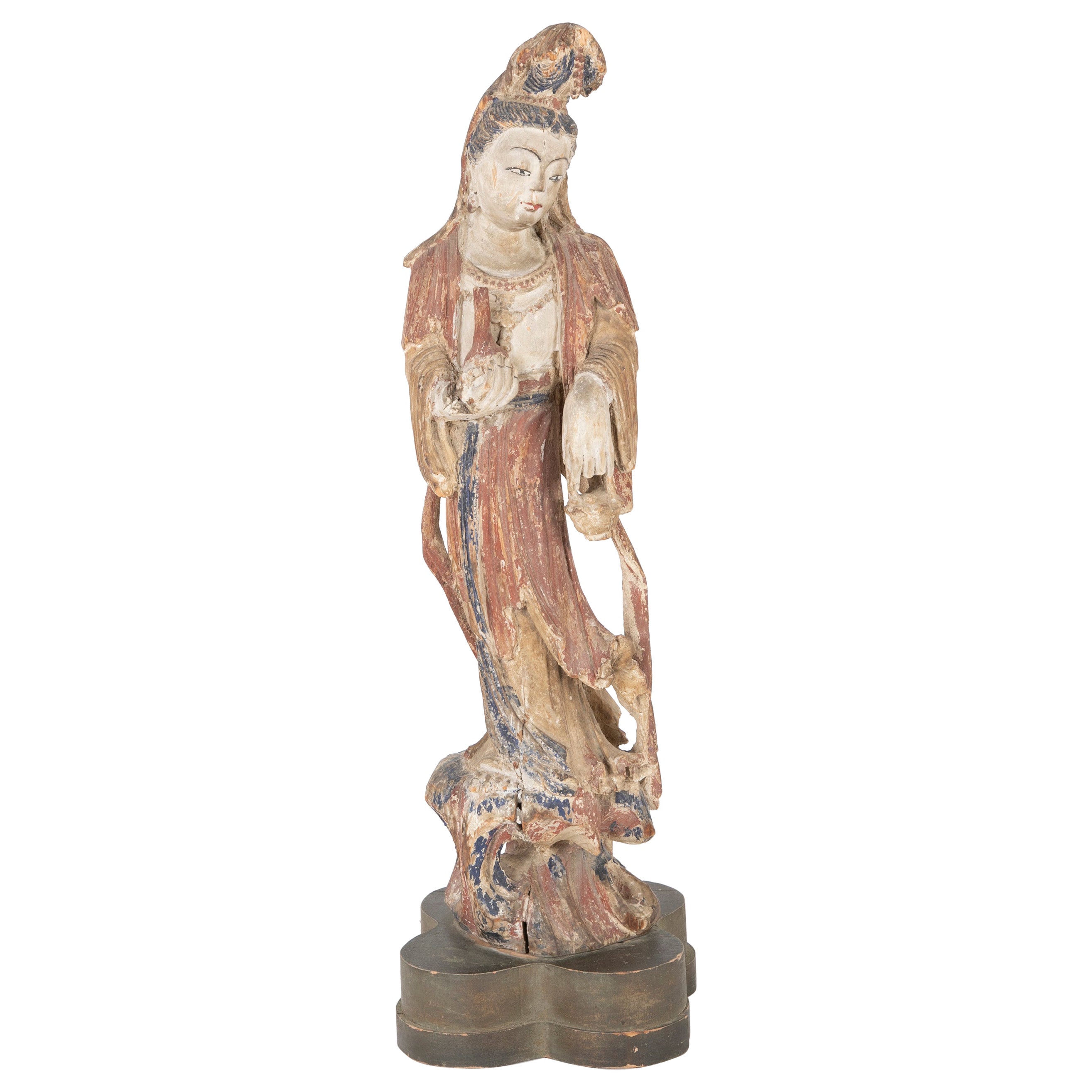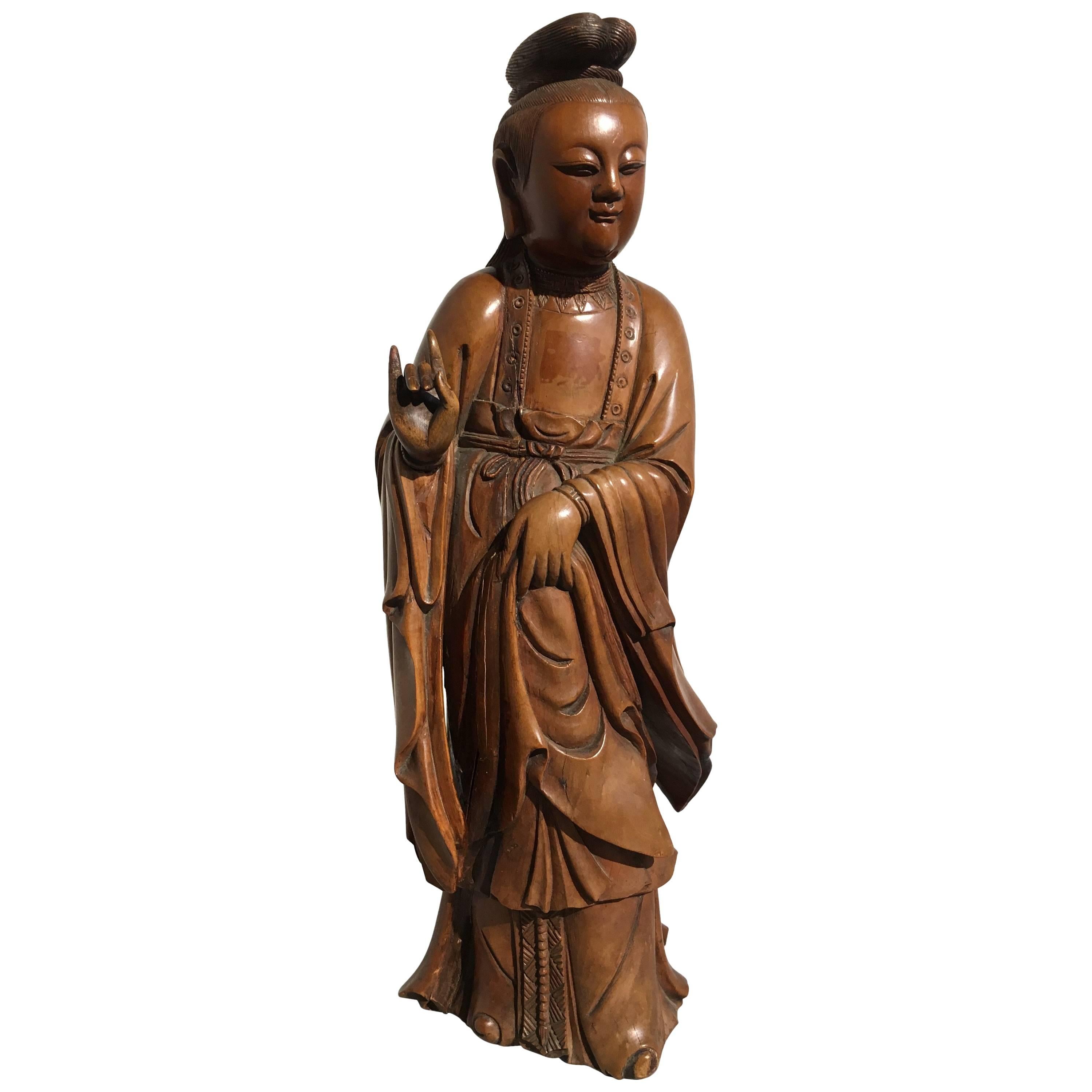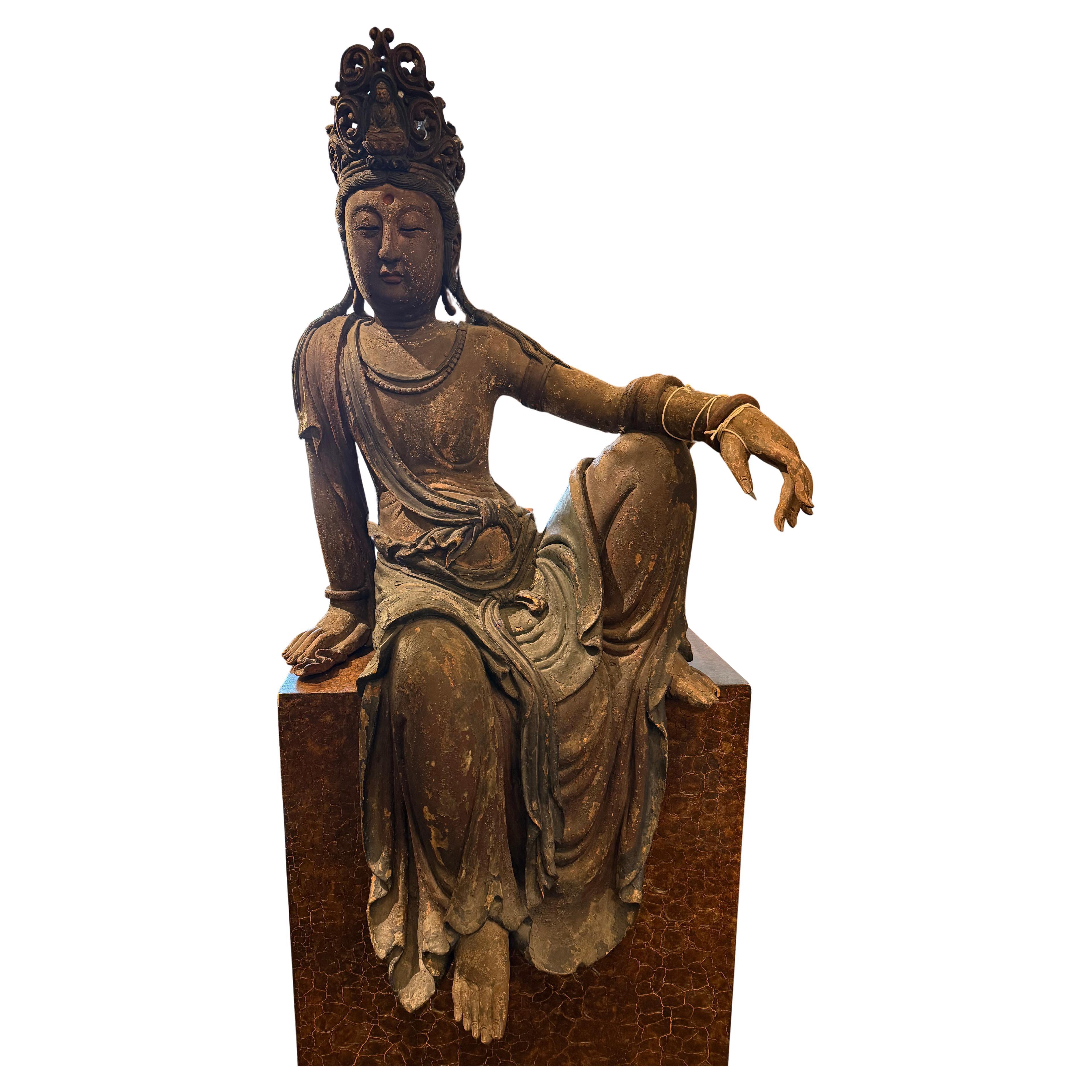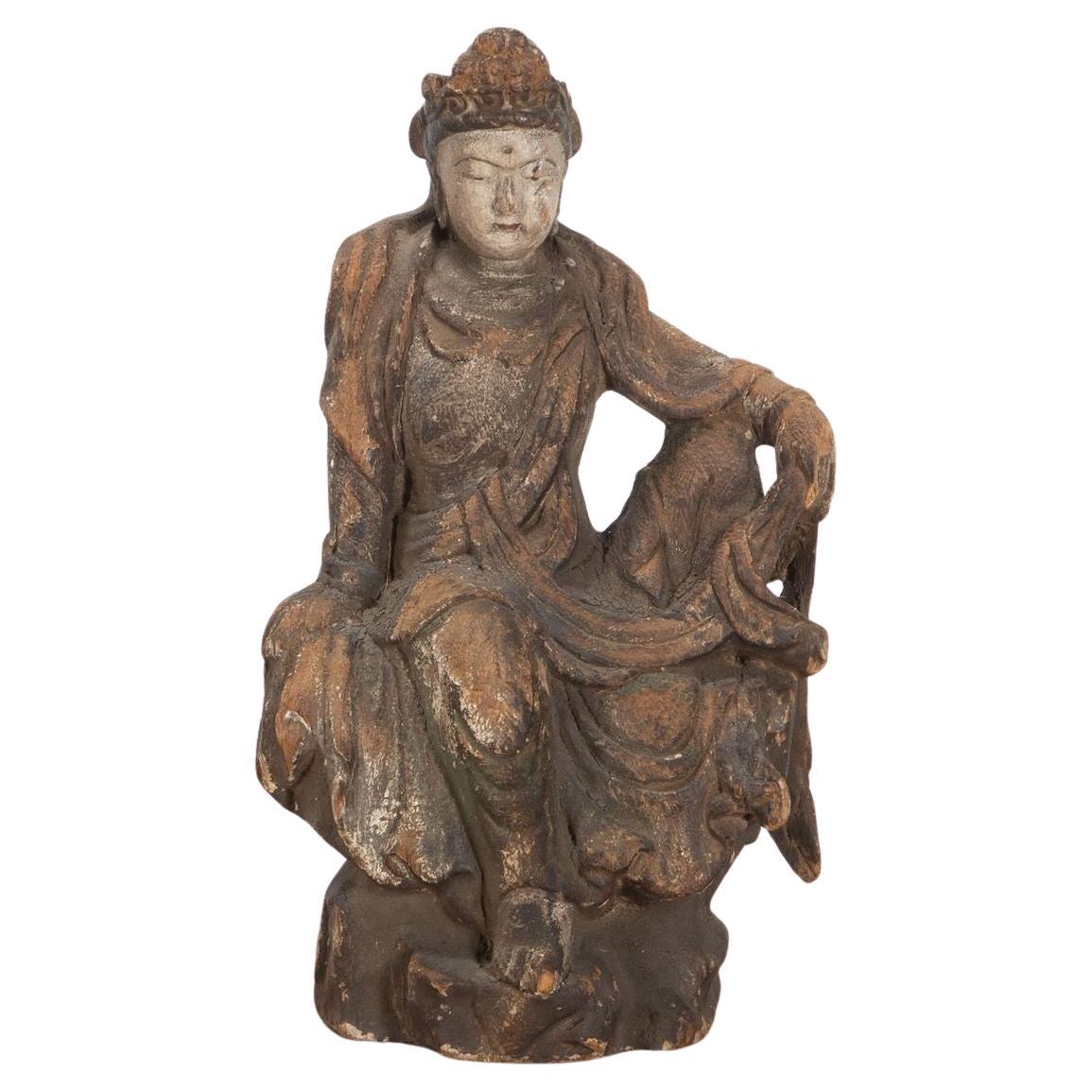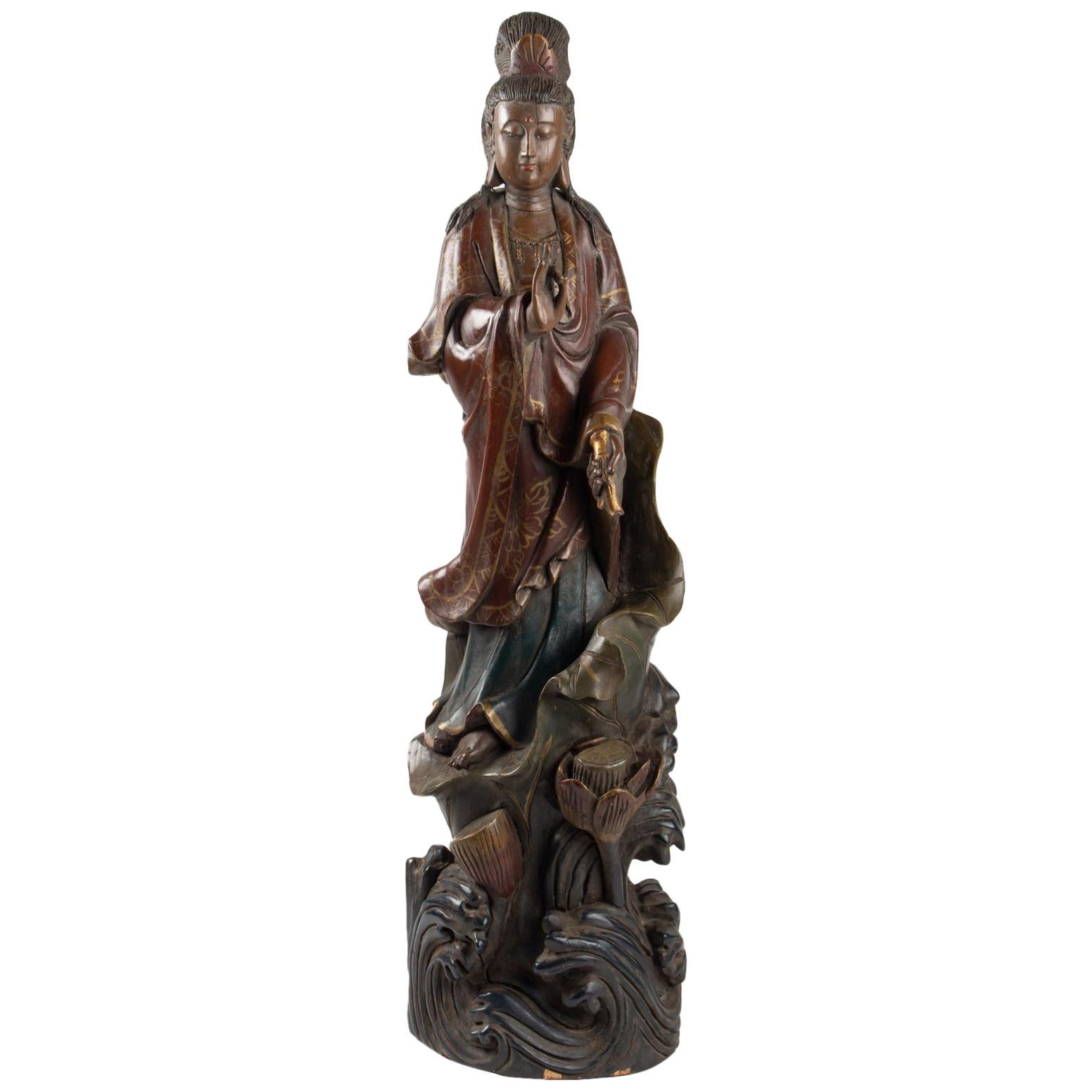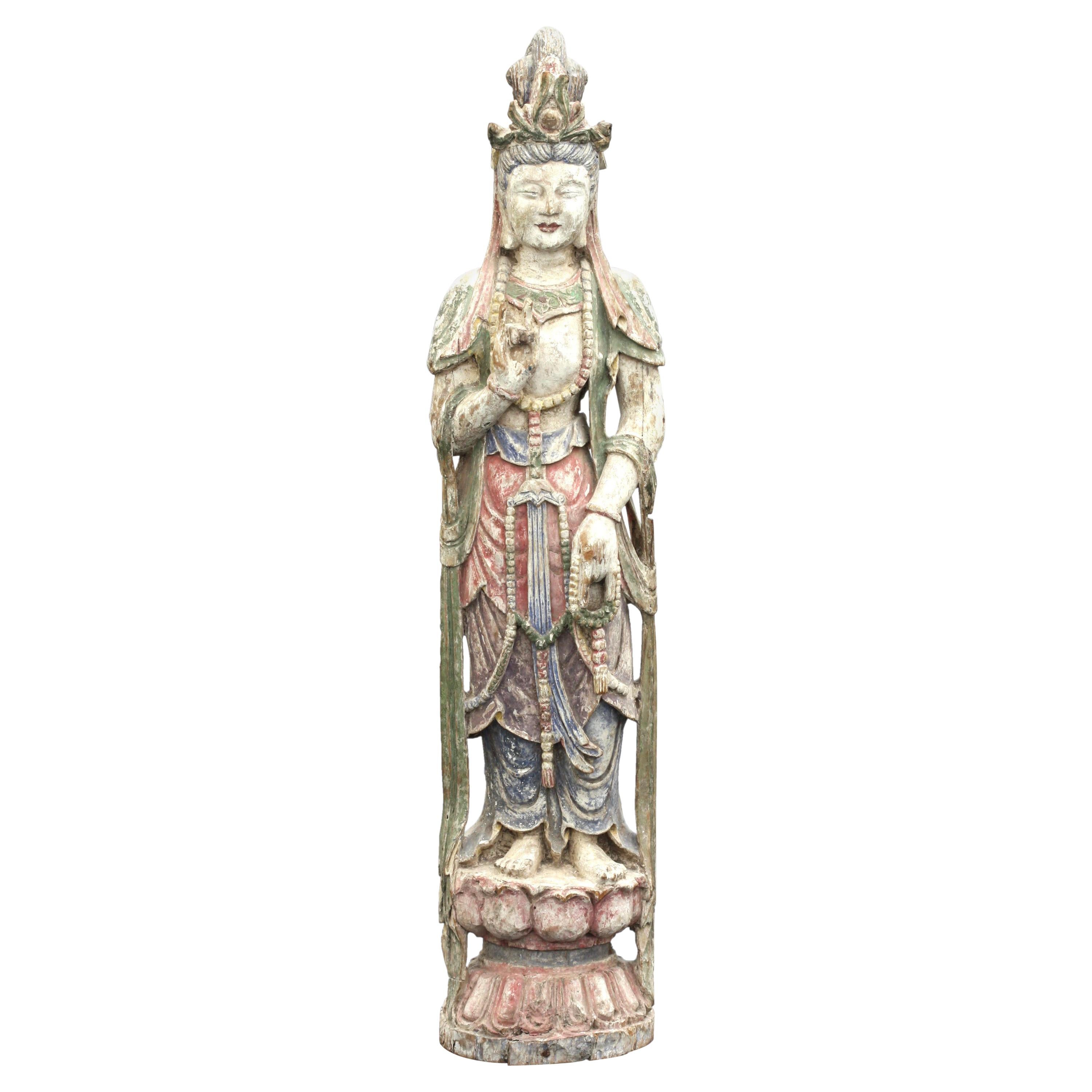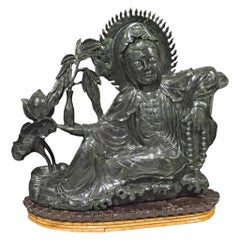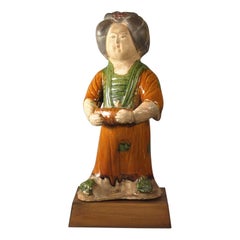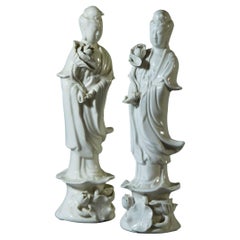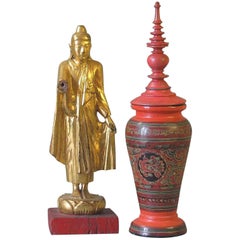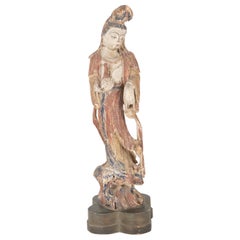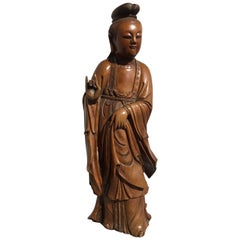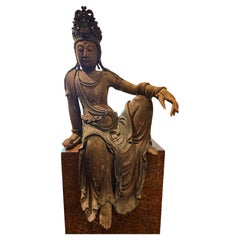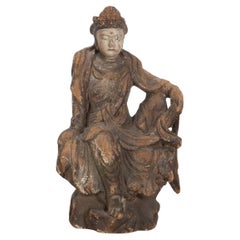Items Similar to Chinese Carved Wood Standing Figure of Guanyin in the Ming Dynasty Style
Want more images or videos?
Request additional images or videos from the seller
1 of 11
Chinese Carved Wood Standing Figure of Guanyin in the Ming Dynasty Style
$1,600
£1,223.29
€1,408.98
CA$2,242.09
A$2,503.08
CHF 1,311.58
MX$30,640.20
NOK 16,657.05
SEK 15,705.49
DKK 10,515.34
About the Item
A Chinese carved wood standing figure of Guanyin in the Ming dynasty style, with polychrome application, the hair tied back into an elaborate high chignon, with her left hand raised, holding a pearl and standing on a rock base.
Late Qing dynasty, circa 1900. The figure measures 45" inches high x 13" inches wide x 9 1/2" inches deep.
- Dimensions:Height: 45 in (114.3 cm)Width: 13 in (33.02 cm)Depth: 9.5 in (24.13 cm)
- Style:Chinoiserie (In the Style Of)
- Materials and Techniques:
- Place of Origin:
- Period:
- Date of Manufacture:circa 1900
- Condition:Wear consistent with age and use.
- Seller Location:Ottawa, CA
- Reference Number:1stDibs: LU141726390473
About the Seller
5.0
Gold Seller
Premium sellers maintaining a 4.3+ rating and 24-hour response times
Established in 1989
1stDibs seller since 2015
458 sales on 1stDibs
Typical response time: 3 hours
- ShippingRetrieving quote...Shipping from: Ottawa, Canada
- Return Policy
Authenticity Guarantee
In the unlikely event there’s an issue with an item’s authenticity, contact us within 1 year for a full refund. DetailsMoney-Back Guarantee
If your item is not as described, is damaged in transit, or does not arrive, contact us within 7 days for a full refund. Details24-Hour Cancellation
You have a 24-hour grace period in which to reconsider your purchase, with no questions asked.Vetted Professional Sellers
Our world-class sellers must adhere to strict standards for service and quality, maintaining the integrity of our listings.Price-Match Guarantee
If you find that a seller listed the same item for a lower price elsewhere, we’ll match it.Trusted Global Delivery
Our best-in-class carrier network provides specialized shipping options worldwide, including custom delivery.More From This Seller
View AllMassive Chinese Guanyin Statue in Jade-Like Green Hardstone
Located in Ottawa, Ontario
Massive 37 1/2"- inch high Chinese Guanyin statue in Green Jade-like hardstone
Late 20th century,
The reclining deity adorned with a crown emulating ...
Category
20th Century Chinese Chinese Export Figurative Sculptures
Materials
Other
Tang Style Sancai-Glazed Figure of a Court Lady
Located in Ottawa, Ontario
A Tang style Sancai-glazed
Figure of a Court Lady,
20th century.
Standing figure with
the long amber and green-glazed robe
and green-glazed shoes,
the delicate features ...
Category
20th Century Chinese Chinese Export Figurative Sculptures
Materials
Pottery
Pair of Blanc-de-Chine Dehua Figures of Guanyin
Located in Ottawa, Ontario
A Pair Of Blanc - De - Chine Dehua
Figures Of Guanyin
Early 20th century
Each figure is modelled standing in flowing robes
upon a lotus leaf decorated stand,
holding a fl...
Category
Early 20th Century Chinese Chinese Export Figurative Sculptures
Materials
Porcelain
Burmese Mandalay Style Gilt Lacquered Buddha & Red Lacquer Covered Baluster Vase
Located in Ottawa, Ontario
A Burmese Mandalay style gilt lacquered wood standing figure of Buddha and together with an unusual Burmese red lacquer covered baluster offering vas...
Category
20th Century Burmese Chinese Export Sculptures and Carvings
Materials
Wood, Lacquer
Two Rare Japanese Izumo Clay Dolls of Emperor and Tenjin, Meiji Period
Located in Ottawa, Ontario
Two rare Japanese Izumo clay dolls of Emperor and Tenjin, Nara Prefecture, Meiji period. Material and simple execution impart a flavor of antiquity and great decorative power. Empero...
Category
Antique Late 19th Century Japanese Meiji Sculptures and Carvings
Materials
Clay
Large Chinoiserie Plaster Sculpture Chinese Figure under a Pine Tree
Located in Ottawa, Ontario
A large chinoiserie plaster sculpture
Chinese figure under a pine tree
Probably early 20th century.
Large, possibly unique sculpture of figure under a pine tree with a rock
for...
Category
Early 20th Century Chinese Chinese Export Sculptures and Carvings
Materials
Plaster
You May Also Like
Chinese Carved and Painted Wood Sculpture of Guanyin
Located in Stamford, CT
Beautiful carving of Guanyin, shown standing on a rocky outcrop, mounted on a lobed wooden base. It was once used as a lamp, and can be rewired. Nice faded painted surface.
Guany...
Category
Early 20th Century Chinese Ming Sculptures and Carvings
Materials
Wood
Chinese Carved Boxwood Figure of Guanyin, Mid-Qing Dynasty
Located in Austin, TX
A sublime Chinese carved boxwood figure of the Bodhisattva of Compassion, Avalokiteshvara, called Guanyin in Chinese, mid-Qing dynasty.
The an...
Category
Antique Late 18th Century Chinese Qing Sculptures and Carvings
Materials
Boxwood
An Important Chinese Carved Wood Figure of Guanyin, Ming Dynasty, 17th Century
Located in ARMADALE, VIC
An Important Chinese Carved Wood Figure of Guanyin, Ming Dynasty, 17th Century
Description:
A dignified portrayal of the bodhisattva, respl...
Category
Antique 17th Century Chinese Ming Sculptures and Carvings
Materials
Wood
Early 17th Century Carved Wood Figure of Guanyin
Located in Gloucestershire, GB
17th Century carved figure of Guanyin in Rajalalitasana position.
Seated on rock with the right arm rested on the right knee. The figures are wearing loose robes that open at the ch...
Category
Antique 17th Century Chinese Figurative Sculptures
Materials
Wood
Guanyin in Carved Wood and Polichrome, China, Early 20th Century, Asian Art
Located in Saint-Ouen, FR
Guanyin in carved wood and polichrome, China, early 20th century, Asian art
Measures: H 56cm, W 16cm, W 15cm.
Category
Vintage 1910s Chinese Chinese Export Figurative Sculptures
Materials
Wood
Chinese Polychrome-Decorated Carved Wood Figure of a Bodhisattva
Located in West Palm Beach, FL
A Chinese polychrome-decorated carved wood figure of a Bodhisattva
Standing regally with her hands in vitarka mudra, a five-pointed diadem set on her head, the angular face with bro...
Category
20th Century Sculptures and Carvings
Materials
Wood
More Ways To Browse
Standing Wood Sculpture
Antique Tie Back
Polychrome Wood Carving
Hand Holding Pearl
Ming Dynasty Sculpture
Ming Figure
Mings Pearl
Antique Guanyin
Chinese Polychrome Carved Wood
Guanyin Sculpture
Chinese Carving Polychrome
Carved Guanyin
Chinese Wood Sculpture Ming
Wood Guanyin
Wood Sculpture Ming Dynasty
Chinese Wood Guanyin
Guanyin Carved Wood
Chinese Carved Figure Ming
